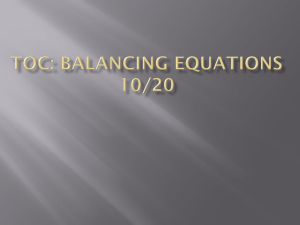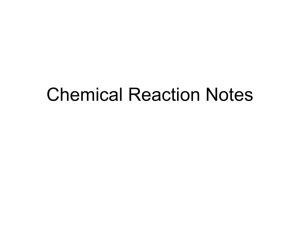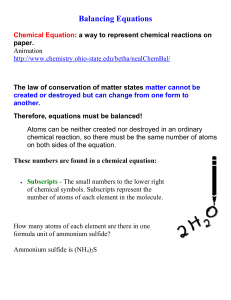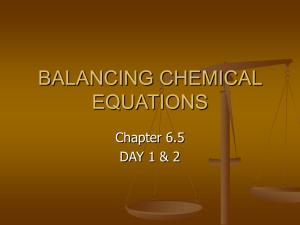Balancing Equations:
advertisement
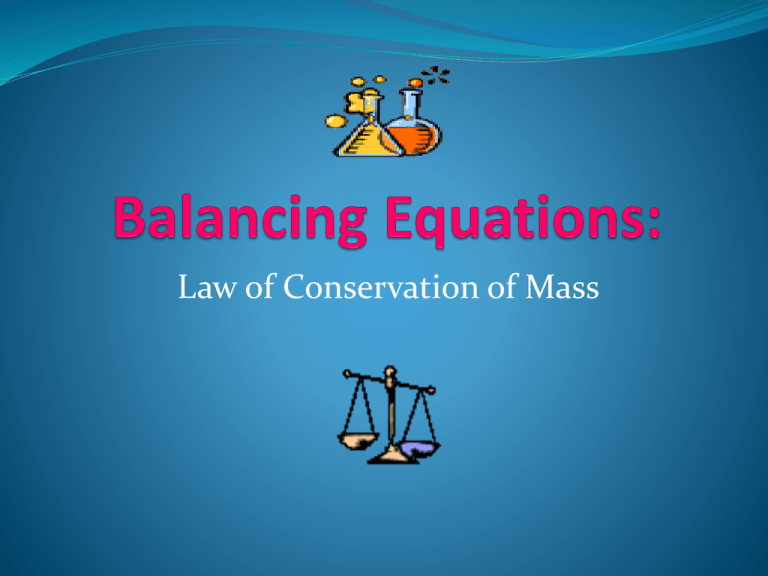
Law of Conservation of Mass Law of Conservation of Mass: Mass is neither created nor destroyed during a chemical reaction- it is conserved Mass reactants = Mass products Chemical Equations/ Law of Conservation of Mass For an equation to follow the Law of Conservation of Mass, the equation must be balanced. Atoms can neither be created nor destroyed in an ordinary chemical reaction There must be the same number of atoms on both sides of the equation Parts of a Chemical Equation: Chemical equations tell us what substances are reacting and what substances are being produced. Reactants Products • Reactants- starting substances • H2 + O2 → • Products- substances formed during the reaction. • → H2 O Numbers found in a chemical reaction Subscripts The small numbers to the lower right of chemical symbols Represent the number of atoms of each element in the molecule Example 1: How many atoms of each element are in one formula unit of Calcium Nitrate: Ca(NO3)2 ? Ca= 1 N= 2 O=6 Example 2: How many atoms of each element are in one formula unit of Magnesium Oxide: MgO ? Mg= 1 O= 1 Numbers found in a chemical reaction Coefficients The large numbers in front of chemical formulas Coefficients represent the number of molecules of the substance in the reaction. Example 1: How many atoms of each element are there in 3 formula units of Calcium Nitrate: 3Ca(NO3)2 ? Ca= 3 N= 6 O= 18 Example 2: How many atoms of each element are there in 2 formula units of Magnesium Oxide: 2MgO Mg = 2 O=2 Writing Chemical Equations Check for diatomic molecules: H2 , N2 , O2 , Cl2 , F2 , Br2 , I2 If these elements appear by themselves in an equation, they must be with the subscript 2. How do we balance the chemical equation: Balance equations by changing coefficients Never by changing subscripts How do we balance the chemical equation: Steps: Write all reactants on the left and all products on the right side of the equation arrow. Make sure you write the correct formula for each element. Use coefficients in front of each formula to balance the number of atoms on each side. Multiply the coefficient of each element by the subscript of the element to count the atoms. Then list the number of atoms of each element on each side. It is often easiest to start balancing with an element that appears only once on each side of the arrow. These elements must have the same coefficient. Next balance elements that appear only once on each side but have different numbers of atoms. Finally balance elements that are in two formulas in the same side. Time to Practice!! Practice Problems: Balance these equations: _____Zn + ______HCl _____ZnCl2 + _____H2 _____KClO3 _____KCl + _____O2 _____S8 + _____F2 _____SF6 _____Fe + _____O2 _____Fe2O3


